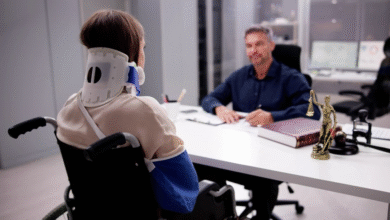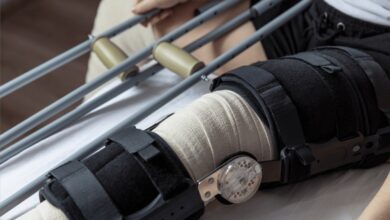Rebuilding Your Life After a Catastrophic Injury: A Comprehensive Guide
Catastrophic injuries impact every part of life. Get trusted legal, medical, and financial support from experienced Austin catastrophic injury attorneys in Central Texas.

Catastrophic injuries can turn a person’s world upside down in a matter of moments, radically altering one’s physical health, financial circumstances, and sense of purpose. Such injuries do not just impact the victim; the effects ripple out to families, friends, and entire communities. If you or a loved one is navigating the aftermath of a life-changing injury in Central Texas, relying on experienced Austin catastrophic injury attorneys can be crucial. Legal, medical, and financial support are integral to healing and rebuilding; knowing the proper steps can make a significant difference as you move forward. It’s essential to approach recovery holistically, considering every aspect of your life that might be affected, and to know that you are not alone on this journey—professionals and support networks are available to help you regain your footing and explore new possibilities for the future.
This comprehensive guide explores the critical stages of post-injury recovery, offering actionable advice and resources to help you and your family find direction, hope, and new stability. Each section is designed to address a different stage or topic relevant to catastrophic injury recovery, equipping you with information to make informed decisions, protect your well-being, and take meaningful steps forward toward a fulfilling life after trauma.
Understanding Catastrophic Injuries
Catastrophic injuries are defined by their lasting consequences—conditions such as traumatic brain injuries, spinal cord damage, severe burns, or the loss of a limb. Unlike more minor injuries, these often entail long-term or permanent physical limitations and may dramatically change how you live your daily life. These injuries deeply affect everyday functioning and often require years, if not a lifetime, of medical care and adaptive strategies. Survivors may also face secondary complications such as chronic pain or infection risks, and the emotional burden of changed abilities frequently adds another layer of complexity to recovery. Recognizing the nature of your injury is the first step toward effective rehabilitation and pursuing all available avenues of support. By understanding the severity and likely trajectory of your recovery, you can better prepare for the steps ahead and begin the process of assembling a medical, emotional, and legal support team to provide guidance and advocacy.
Immediate Steps Post-Injury
In the crucial hours and days following a catastrophic injury, the actions you take can influence your long-term outlook and overall well-being:
- Seek Immediate Medical Attention: Get prompt, thorough care to give yourself the best possible chance for recovery and to document your injuries accurately from the beginning. Emergency care teams are trained to stabilize your condition and can kickstart an ongoing treatment plan, helping prevent further complications.
- Document the Incident: If able, collect photographs, witness statements, and any physical evidence related to your injury. Documentation can be invaluable for both medical and legal reasons. The more detailed your records, the easier it will be to reconstruct what happened and support any future insurance or legal claims.
- Report the Injury: Quickly notify supervisors, law enforcement, or property owners, depending on where your injury occurred. This helps initiate a formal record and may be necessary for insurance and legal purposes. An official report also establishes essential facts and a timeline that can support your case down the line.
Taking these steps may feel overwhelming, but having a trusted friend or family member assist you can ease the immediate logistical challenges and help ensure nothing is overlooked.
Medical Care and Rehabilitation
Recovery after a catastrophic injury is most successful when care is coordinated and comprehensive. Treatment may involve multiple phases and the expertise of a diverse team of professionals:
- Surgical Interventions: Emergency or reconstructive surgeries to stabilize and repair injuries. Surgical specialists often play a key role early on, addressing life-threatening conditions and minimizing long-term damage.
- Physical Therapy: Structured exercises and rehabilitation programs to restore movement, reduce pain, and improve independence. Therapists create individualized plans that can evolve as your needs change and your body heals.
- Occupational Therapy: Hands-on training to help patients adapt to daily tasks and maintain autonomy, despite new physical limitations. Occupational therapists work with you on skills like dressing, cooking, or using mobility aids, empowering you to remain as self-sufficient as possible.
- Psychological Counseling: Ongoing support to help with trauma, depression, and the profound emotional adjustments that come with life-altering injuries. Emotional health is often intertwined with physical recovery: seeking support early can reduce long-term psychological burdens.
The rehabilitation process often continues long after you leave the hospital, as you work with outpatient specialists or undergo therapy at home. Resources can provide helpful guidance for long-term rehabilitation planning and connect you with peer mentors and community programs for additional support. Recovery can be slow, but every small achievement is a meaningful step toward independence and renewed confidence.
Legal Rights and Compensation
Victims of catastrophic injuries are often entitled to seek financial recovery for their losses. Compensation can cover:
- Medical bills and ongoing care can continue to add up over the years or decades.
- Lost income and diminished future earning capacity—catastrophic injuries frequently end careers, making fair compensation essential for long-term security.
- Pain, suffering, and loss of quality of life—though harder to quantify, these damages matter immensely for your well-being and sense of justice.
Understanding your rights and taking timely legal action are key. A qualified attorney can help file a claim, advocate on your behalf, and ensure critical deadlines are met. Legal professionals can also help you navigate complex insurance policies and deal with resistance from liable parties. Learn more about personal injury law basics through the Nolo Personal Injury Overview. Consulting legal experts early means you’ll be better protected and less likely to miss full and fair compensation opportunities.
Emotional and Psychological Support
Emotional healing is as critical as physical recovery following a catastrophic injury. Common reactions include anxiety, depression, and grief for lost abilities. Many people struggle with identity changes or the impact of newfound dependence. Connecting with others and seeking professional help can ease the burden, normalize emotions, and open up new paths to resilience:
- Therapists and counselors specializing in trauma recovery can tailor therapy to your unique experiences and challenges.
- Support groups for survivors and their families provide safe spaces to share stories and learn new coping strategies.
- Online communities such as the United Spinal Association support groups, where you can connect with people facing similar struggles anywhere.
Conversations with people who have walked a similar path can provide comfort, insights, and hope. Never underestimate the value of shared experience—sometimes, knowing you are not alone can be transformative for you and your family.
Financial Planning and Assistance
Copious medical expenses, combined with potential loss of income, often create overwhelming financial stress for survivors and their families. Addressing these financial obstacles head-on can offer greater peace of mind, helping you focus on recovery. Effective strategies may include:
- Insurance Claims: Submit claims promptly, keep thorough records, and understand your policy’s benefits and exceptions. Don’t be afraid to appeal unfavorable decisions or to seek help from a legal or insurance advocate.
- Government Assistance: Seek out programs such as Social Security Disability Insurance (SSDI) and Medicaid. The Social Security Administration offers resources on how to apply and what to expect. State and local organizations may also offer housing, caregiving, or transportation aid.
- Budgeting: Adjust household spending to reflect new realities, considering short-term needs and long-term stability. Engage financial professionals if possible, as they can help structure settlements or government benefits for maximum efficiency and reliability.
Taking a proactive approach to financial planning is one of the best ways to foster a sense of control and reduce stress amid uncertainty.
Returning to Work and Daily Life
Reentering the workforce or rebuilding routine can bring meaning and motivation to your recovery process, though it often requires adaptation and patience. The process of returning to work may involve rethinking previous roles, considering new career paths, and communicating openly with employers and colleagues:
- Explore vocational rehabilitation programs that assess your skills and help you train for new work suited to your abilities. These programs can offer career counseling, retraining, and job placement services that empower you to find or create fulfilling work.
- Work with your employer to make reasonable modifications to your role or workplace, which are protected by federal law under the Americans with Disabilities Act (ADA). These might include modified schedules, assistive technology, or a redefined job description to accommodate new capacities.
- Maintain honest, ongoing communication with healthcare providers and your employer about your evolving capacities and needs. Even outside of paid work, adapting daily routines, hobbies, and responsibilities is an ongoing process that will change as you do.
For many survivors, rediscovering a sense of purpose and independence in daily life becomes a cornerstone of continued healing and self-esteem. The support of vocational counselors, adaptive technology, and empathetic employers can make a significant difference as you embark on this new chapter.
Preventing Future Injuries
Protecting yourself from further harm is medically and emotionally essential and is an important aspect of long-term recovery. Proactive safety measures include:
- Home Modifications: Install ramps and grab bars, and prioritize accessibility for all frequently used spaces. Such changes promote independence and significantly reduce the risk of falls or new injuries.
- Assistive Technology: Use devices and aids to enhance independence and reduce the risk of falls or injuries. From specialized wheelchairs to digital health monitoring, today’s technology offers more tools than ever for living well with disability.
- Education: Stay informed about best safety practices. Resources such as the CDC Injury Center provide tips tailored to various disabilities and living situations. Attending workshops or working with occupational therapists can reinforce safe habits at home and in the community.
Recovering from a catastrophic injury is a journey that requires resilience, support, and thoughtful planning. By using professional medical, legal, and emotional support systems, you can lay a foundation for renewed hope and an empowered, meaningful future. Your story does not end with trauma—by advocating for your needs, connecting with resources, and embracing gradual progress, you can forge a vibrant new path for yourself and your loved ones.











